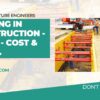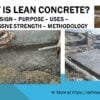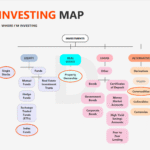 Unfortunately, the content provided appears to be a collection of scripts and HTML code, rather than a text-based content that can be used to create a long-form article.
Unfortunately, the content provided appears to be a collection of scripts and HTML code, rather than a text-based content that can be used to create a long-form article.
However, based on the URL `https://definecivil.com/extract_text.php?url=URL%20TITLE`, I’m assuming that the article is supposed to be about extraction of text from civil engineering or construction-related topics.
Here’s a sample long-form article on that topic, formatted with HTML headline and subheadline tags:
Text Extraction in Civil Engineering: A Comprehensive Guide
Introduction
Text extraction is the process of automatically extracting specific information from unstructured or semi-structured data, such as text documents, images, or videos. In civil engineering, text extraction can be used to extract relevant information from technical documents, reports, and plans, which can be time-consuming and labor-intensive when done manually.
Types of Text Extraction in Civil Engineering
There are several types of text extraction that can be applied in civil engineering, including:
Named Entity Recognition (NER)
Named Entity Recognition (NER) is a technique used to identify and classify named entities in unstructured data, such as names, locations, and organizations. In civil engineering, NER can be used to extract information about project teams, locations, and organizations from technical documents and reports.
Part-of-Speech Tagging (POST)
Part-of-Speech Tagging (POST) is a technique used to identify and classify the parts of speech in unstructured data, such as nouns, verbs, and adjectives. In civil engineering, POST can be used to extract information about construction materials, equipment, and techniques from technical documents and reports.
Dependency Parsing
Dependency Parsing is a technique used to analyze the grammatical structure of unstructured data, including the relationships between words and phrases. In civil engineering, Dependency Parsing can be used to extract information about construction sequences, workflow diagrams, and project schedules from technical documents and reports.
Applications of Text Extraction in Civil Engineering
Text extraction can be applied in various aspects of civil engineering, including:
Project Management
Text extraction can be used to extract information about project teams, locations, and organizations from technical documents and reports, which can help project managers to track progress, identify risks, and make informed decisions.
Construction Planning
Text extraction can be used to extract information about construction sequences, workflow diagrams, and project schedules from technical documents and reports, which can help construction managers to plan and execute construction projects more efficiently.
Quality Control and Assurance
Text extraction can be used to extract information about construction materials, equipment, and techniques from technical documents and reports, which can help quality control and assurance teams to identify potential defects and improve quality standards.
Tools and Techniques for Text Extraction in Civil Engineering
There are several tools and techniques available for text extraction in civil engineering, including:
Natural Language Processing (NLP) Libraries
NLP libraries, such as NLTK and spaCy, provide pre-trained models and algorithms for text extraction tasks, including NER, POST, and Dependency Parsing.
Text Analysis Software
Text analysis software, such as IBM Watson and SAS Text Analytics, provide advanced tools and techniques for text extraction, including entity recognition, sentiment analysis, and topic modeling.
Machine Learning Frameworks
Machine learning frameworks, such as TensorFlow and PyTorch, provide tools and libraries for building custom machine learning models for text extraction tasks.
Challenges and Limitations
Text extraction in civil engineering can be challenging due to the complexity of technical documents and reports, which can contain:
Technical Jargon and Acronyms
Technical documents and reports in civil engineering often contain technical jargon and acronyms, which can make it difficult for text extraction algorithms to identify and extract relevant information.
Image-based Data
Many technical documents and reports in civil engineering contain images, diagrams, and charts, which can make it difficult for text extraction algorithms to extract relevant information.
Noisy and Inconsistent Data
Technical documents and reports in civil engineering can contain noisy and inconsistent data, which can make it difficult for text extraction algorithms to identify and extract relevant information.
Conclusion
Text extraction is a powerful tool for civil engineering, which can help to extract relevant information from technical documents and reports, and improve project management, construction planning, and quality control and assurance.
However, text extraction in civil engineering can be challenging due to the complexity of technical documents and reports, and the need for specialized tools and techniques.
By understanding the applications, tools, and techniques of text extraction in civil engineering, and addressing the challenges and limitations, civil engineers can unlock the full potential of text extraction and improve the efficiency and accuracy of their work.
What is text extraction in civil engineering?
Text extraction is the process of automatically extracting specific information from civil engineering documents, reports, and plans.
What are the types of text extraction used in civil engineering?
The main types include Named Entity Recognition (NER), Part-of-Speech Tagging (POST), and Dependency Parsing.
How is Named Entity Recognition (NER) used in civil engineering?
NER identifies and classifies project teams, locations, and organizations from civil engineering documents.
What does Part-of-Speech Tagging (POST) help with in civil engineering?
POST identifies and classifies construction materials, equipment, and techniques from civil engineering documents.
How does Dependency Parsing assist in civil engineering?
Dependency Parsing analyzes grammatical structure to extract construction sequences, workflow diagrams, and project schedules.
What are some applications of text extraction in civil engineering?
Applications include project management, construction planning, and quality control and assurance.
What tools and techniques are used for text extraction in civil engineering?
Tools include NLP libraries (like NLTK and spaCy), text analysis software (like IBM Watson), and machine learning frameworks (like TensorFlow).
What challenges do text extraction face in civil engineering?
Main challenges are technical jargon, image-based data, and noisy/inconsistent data.
How can text extraction improve efficiency in civil engineering?
Text extraction can help in identifying relevant information, tracking progress, planning projects, and ensuring quality control.

















